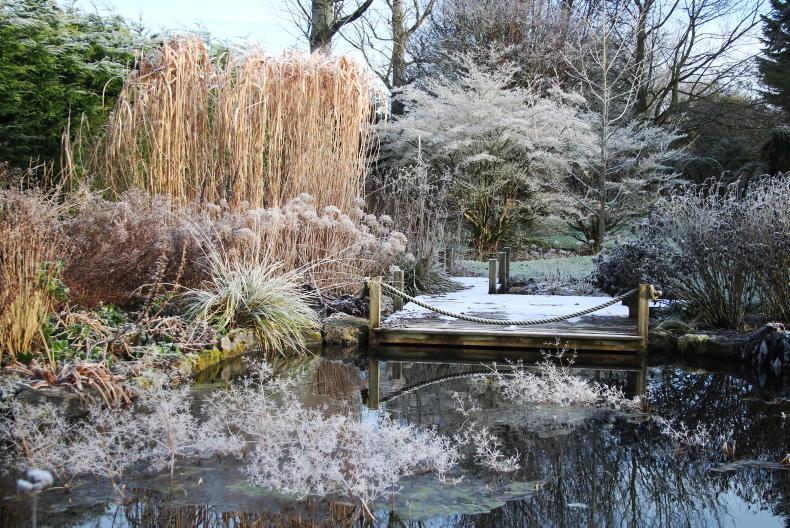Name
Double daisy, bachelors buttons
Botanical names: Bellis perennis
The first word means beauty, the second means perennial.
Family
Daisy has its own family of which it is the type species. That it is easy to grow is not surprising because the double daisies of flower beds are simply garden versions of the wild daisy that grows so extensively in lawns. Originally some plants with semi-double flowers were spotted and kept as a curiosity. From these unusual forms, even more fully double flowers were raised by selection, until the flowers hardly look like a daisy at all.
The daisy flower structure lends itself to making double flowers. A daisy is a composite flower and the family are botanically known as the composites. Each daisy flower is made up of scores of tiny individual flowers, each one a little tube, these stacked together to form the yellow central part of the flower, the florets clearly visible.
On the outside of the central yellow disc of flowers are the specialized ray florets. These have a relatively large white or pink petal attached and they are carried around the edge in a ring. The function of the ray florets is to provide a signal to passing insects to visit and spread pollen across the yellow disc, pollinating the yellow florets and allowing the formation of seeds.
In a double-flowered daisy, some of the central yellow florets are converted to ray florets with petals, so the flower has a fuller appearance. In some cases only some florets are altered, but in others practically all the florets are converted and the flower takes a rounded pompom shape. In addition, the petals of some kinds of these double daisies are quilled, that is, they have a rolled shape not flat like the ordinary daisy.
Garden value
Double daises are pretty winter and spring bedding plants, in flower beds or the front of a border, or in pots or window boxes. They flower for a long period, peaking in the coming weeks in shades of white, pink and red. They can be combined with spring bulbs and look very well with miniature daffodils.
Although used as an annual, it is perennial and the plants can be kept for a few years. They tend to become a bit ungainly, but can be trimmed hard after flowering to keep them neat. This also gets rid of the flowers that might produce unwanted seeds, as even some double forms are still fertile.
Sow tender vegetables now
Sow the seeds of sweet corn, courgettes, pumpkins, squash and runner beans during April, about the middle of the month is ideal. These should be sown indoors in a greenhouse or on a bright window sill. Sow one seed to a small pot filled with compost. Grow the seedlings on without any check, watering them regularly to maintain good strong growth but not over-watering.
The plants will be ready for planting out in between four and six weeks. Choose a spell of mild weather and harden off the plants before planting out. Plant sweet corn about forty or fifty centimetres apart in a block of short rows to encourage pollination. In cold wet years, pollination can be erratic and result in poorly-filled cobs.
Sweetcorn can be started in the greenhouse from seed and transplanted out after four to six weeks
The foliage often turns yellow due to cold after planting out but these plants will recover when a warm spell of a few days arrives. Well-prepared, rich soil is ideal and some liquid feeding helps to keep the plants in active growth. Water well if dry weather does come.
Fruit, vegetables and herbs
March was wet but April was much better. Continue to sow vegetable seeds of most kinds as conditions allow. Onion sets can be put in now too. Potatoes can be planted without delay. French beans can be sown when the chill has gone out of the ground.
Lawns
Mowing should be well under way in areas not observing No Mow May. Use organic lawn moss killer if there is heavy moss growth. If new areas of lawn are to be sown, the ground should be cultivated if possible. If there are weeds present, these could be sprayed off first. Sow lawn seed as soon as possible.
Trees, shrubs and roses
Bush roses and repeat-flowering climbers are growing strongly and should be sprayed soon against blackspot disease. Evergreens, both broad-leaved and coniferous, can be planted as the sap rises over the next couple of weeks.
Flowers
If weeds have not been removed from flower beds and borders, do so now or the task will be much greater in another few weeks. Gladiolus can be planted directly outdoors from the middle of the month. So too can lilies, which can also be potted up for summer flowers.
Greenhouse and house plants
Sow seeds of sweet peppers and chilli peppers. If there is a delay, it would be better to wait and purchase plants. Feed and water heavily all greenhouse plants, if not already done. Sow sweet corn and runner beans for planting out at the end of May.
Name
Double daisy, bachelors buttons
Botanical names: Bellis perennis
The first word means beauty, the second means perennial.
Family
Daisy has its own family of which it is the type species. That it is easy to grow is not surprising because the double daisies of flower beds are simply garden versions of the wild daisy that grows so extensively in lawns. Originally some plants with semi-double flowers were spotted and kept as a curiosity. From these unusual forms, even more fully double flowers were raised by selection, until the flowers hardly look like a daisy at all.
The daisy flower structure lends itself to making double flowers. A daisy is a composite flower and the family are botanically known as the composites. Each daisy flower is made up of scores of tiny individual flowers, each one a little tube, these stacked together to form the yellow central part of the flower, the florets clearly visible.
On the outside of the central yellow disc of flowers are the specialized ray florets. These have a relatively large white or pink petal attached and they are carried around the edge in a ring. The function of the ray florets is to provide a signal to passing insects to visit and spread pollen across the yellow disc, pollinating the yellow florets and allowing the formation of seeds.
In a double-flowered daisy, some of the central yellow florets are converted to ray florets with petals, so the flower has a fuller appearance. In some cases only some florets are altered, but in others practically all the florets are converted and the flower takes a rounded pompom shape. In addition, the petals of some kinds of these double daisies are quilled, that is, they have a rolled shape not flat like the ordinary daisy.
Garden value
Double daises are pretty winter and spring bedding plants, in flower beds or the front of a border, or in pots or window boxes. They flower for a long period, peaking in the coming weeks in shades of white, pink and red. They can be combined with spring bulbs and look very well with miniature daffodils.
Although used as an annual, it is perennial and the plants can be kept for a few years. They tend to become a bit ungainly, but can be trimmed hard after flowering to keep them neat. This also gets rid of the flowers that might produce unwanted seeds, as even some double forms are still fertile.
Sow tender vegetables now
Sow the seeds of sweet corn, courgettes, pumpkins, squash and runner beans during April, about the middle of the month is ideal. These should be sown indoors in a greenhouse or on a bright window sill. Sow one seed to a small pot filled with compost. Grow the seedlings on without any check, watering them regularly to maintain good strong growth but not over-watering.
The plants will be ready for planting out in between four and six weeks. Choose a spell of mild weather and harden off the plants before planting out. Plant sweet corn about forty or fifty centimetres apart in a block of short rows to encourage pollination. In cold wet years, pollination can be erratic and result in poorly-filled cobs.
Sweetcorn can be started in the greenhouse from seed and transplanted out after four to six weeks
The foliage often turns yellow due to cold after planting out but these plants will recover when a warm spell of a few days arrives. Well-prepared, rich soil is ideal and some liquid feeding helps to keep the plants in active growth. Water well if dry weather does come.
Fruit, vegetables and herbs
March was wet but April was much better. Continue to sow vegetable seeds of most kinds as conditions allow. Onion sets can be put in now too. Potatoes can be planted without delay. French beans can be sown when the chill has gone out of the ground.
Lawns
Mowing should be well under way in areas not observing No Mow May. Use organic lawn moss killer if there is heavy moss growth. If new areas of lawn are to be sown, the ground should be cultivated if possible. If there are weeds present, these could be sprayed off first. Sow lawn seed as soon as possible.
Trees, shrubs and roses
Bush roses and repeat-flowering climbers are growing strongly and should be sprayed soon against blackspot disease. Evergreens, both broad-leaved and coniferous, can be planted as the sap rises over the next couple of weeks.
Flowers
If weeds have not been removed from flower beds and borders, do so now or the task will be much greater in another few weeks. Gladiolus can be planted directly outdoors from the middle of the month. So too can lilies, which can also be potted up for summer flowers.
Greenhouse and house plants
Sow seeds of sweet peppers and chilli peppers. If there is a delay, it would be better to wait and purchase plants. Feed and water heavily all greenhouse plants, if not already done. Sow sweet corn and runner beans for planting out at the end of May.










SHARING OPTIONS